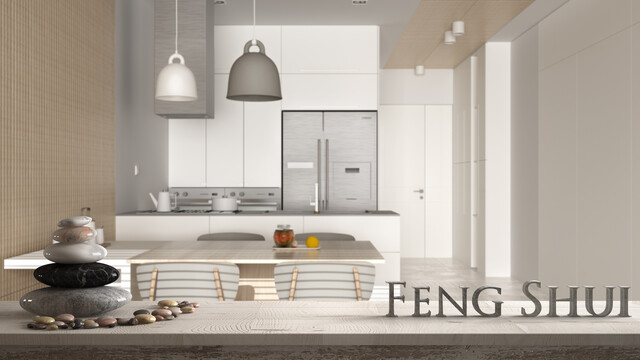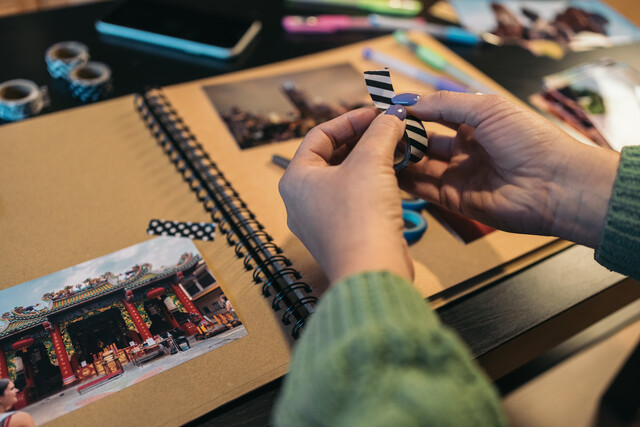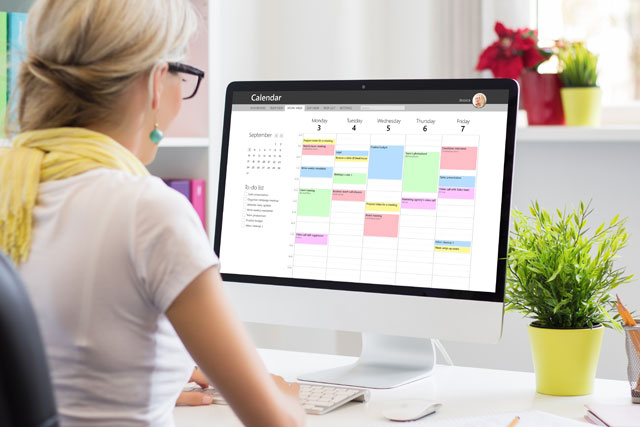One of the easiest ways to organize the home is to use the room-by-room approach. Here, instead of focusing on the fact that you need to get your entire house organized, you can focus your attention on the smaller, less intimidating tasks. Your clients will appreciate this approach, because it gives them a little room for movement. More gung-ho clients can decide to tackle an entire room in a single day. Others might divide the room into smaller tasks and take a whole week to get the job done. It doesn't so much matter how quickly your client gets the job done (heck, they're paying you by the hour), just that they do, in fact, get the job done.
When it comes time to decide which rooms and areas to tackle first, we recommend the outside-in approach. Why?
Because once your client gets used to driving into a neat, clean yard with an uncluttered, easy to get around garage, they'll begin to expect a clean interior. And the chances are, they'll also get motivated to be the ones that make it happen!
Front and back entrances include not only patios and foyers, but also the area of the yard immediately surrounding the entrances. This also includes your driveway (the entrance to your property).
Start with the yard. Get out there and pick up any trash, toys or tools that might be lying around, and put them in their designated places. Pull up any unsightly weeds and work with what you have to make the most impressive first impression possible.
Next, move to your patio and/or garage. Make sure that tools and utensils are put in their appropriate drawers, hooks, or cabinets. Get as much stuff off of the ground and hung up on the walls or ceiling. Organize similar tools and utensils together, in a logical order.
When it comes to organizing hallways, you should be aiming to make them easy to navigate. Many times friends, family, and relatives (as well as less familiar acquaintances and strangers) will have to navigate the hallways to find essential spots like the bathroom. And chances are, at some point they may have to do it at night.
Some homes have living rooms. Others have dens. Yet others have both. Whatever category your client's home falls in, you need to have some ready solutions for getting that space organized quickly, efficiently and aesthetically.
Your first step should be offering them an honest appraisal on their living room or den's current lay-out and organization. Does the furniture work well in the space, or does it leave the room too crowded? Is there ample storage space available for the books, movies, games and video games?
No one wants to have to run laps like the Indie 500 just to get a bowl, add some water, add the dry ingredients, pour them into another bowl and get that bowl into the preheated oven! And that's only one course of the night's meal! Try to consolidate your frequently used items in places that are convenient to find them. Keep your glasses and cups in the pantry closest to the refrigerator and freezer. Keep pots and pans as close to the oven and stove as possible.
Keep your pantry neat by scheduling time once every week or so to go through the contents of your pantry. Be on the lookout for empty boxes and cartons, stale chips or crackers, and expired items. Store like ingredients together, and always turn your labels outwards so that they can easily be read.
Having too many multiples is a consistent problem that you'll discover. Most of us, and most of your clients, have tons of duplicates, especially in the kitchen. No one needs more plastic food containers than the fridge can hold. Decide how many kitchen items, such as mugs and pots, are really needed and let the rest go. Try not to let items outgrow their homes. Does the person really need the back-up can opener, six spatulas, 20 different coffee mugs, or a dozen different cheese spreaders?
If you have multiple bathrooms, keeping them organized can seem difficult. But if your client has multiple family members and only one bathroom, organization can seem impossible! With three, four, or five people all vying for the same space to brush their hair and teeth, use the bathroom, take a shower, put on their make-up and shave -- the one-bathroom home can seem a bit like a circus on its first night in town -- hectic and messy!
Regardless of how many bathrooms a client's home may have, the most important thing that you, as an organizer, can do is help them to make the absolute most out of their space. This means picking up extra shelving and storage equipment to use inside the tub or shower. It means clearly delineating whose toothbrushes and medicines go in which cabinet. It means having a labeled shelf for every family member and being able to find the hairdryer or cotton swabs without having to call in search and rescue professionals.
Bedrooms
When it comes to organizing a bedroom, you want to do it so that the room will look attractive, while still accommodating clothes and other personal items neatly. In order to do this, you're going to need plenty of storage space, to help keep surfaces clean and avoid complicated clutter.
If your client's bedroom (or their kids' rooms) could benefit from some added storage space, here are a few easy ways to make it happen:
- First of all, be sure that you have your client arrange all the furniture and storage units in such a way that maximizes the best use from available space.
- Consider storing a cot (or even additional drawers) beneath the bed. A cot will serve as an emergency sleeping arrangement for unexpected guests. Additional drawer space will serve to stow precious (or unmentionable) items out of sight, but within easy reach.
- Consider switching your client from a full-, queen-, or king-sized bed to a futon. Not only are the firm mattresses often preferred to the sinking feeling of a typical mattress, you can also fold the futon into a couch position for additional room in the bedroom.
- Maximize the room's closet space by adding a chest of drawers (or more, if they'll fit) into the closet. You can hang short garments (like shirts, shorter skirts, and halved slacks) above the chest while storing undergarments, lingerie, socks and tee-shirts within the drawers.
Attics and Basements
The first thing to consider when it comes to organizing a client's attic or basement is what, exactly, is being stored in the attic or the basement. Oftentimes, these parts of our home become the final resting place of items that we don't want, use, need, or have any room for. Not only that, these same items are attracting dirt, bugs, rats, mice, and mildew while they are seemingly out of sight, and out of mind.
Just about the only things that can safely be stored in your attic or basement include gardening equipment, hardware, tools, paint, and occasionally, some exercise equipment. If you're storing other items in your basement or attic, make sure that you've packed those items in clean, dry boxes that are labeled with easy-to-read, large stickers or labels. Then, get those boxes up off of the ground and onto the relative safety of shelving. And anything that you're saving for memories or sentimental value should be awarded space in the home. If you can't afford that space, consider giving those mementos to others who will benefit from the gesture.
Finally, try to avoid putting anything in your attic if you don't have easy access to your attic, or if it's not structurally sound. Many attics can only be accessed by drop-down stairs, or -- even worse -- you have to get your own ladder to access the space. If the items you're planning to store can be hidden away in your attic or basement for indefinite periods of time, you might consider whether or not you really need those items!
Closets and Cabinets
When it comes to home storage space like closets and cabinets, there's no argument that this space is valuable and always in demand. However, although it may seem as though there's never enough cabinet or closet space, generally, if you take a fresh look at your client's situation, you'll see that there's more potential space than either of you may realize. The key is learning to realize and utilize this additional space effectively.
The first way to do this is to simply maximize your closet and cabinet space by weeding through your belongings and identifying those things that you're able to live without. It can also mean that you must help your client think of new ways to organize their storage space. Instead of relying so heavily on cabinets and closets, it may be necessary to consider applying additional storage solutions, like armoires, drawers, shelves, etc.
When it comes to closets, one of the most effective measures you can take is installing inexpensive, heavy-duty customizable shelving. Whether you opt to install wire-coated shelves, or a more fragrant, attractive wooden variety, optimizing the total amount of storage space in your closets is the number one priority.
As far as cabinets go, the most efficient method is to install a lazy Susan or other similar contraption to make it easier to access the items your client stores in the back of the shelves without having to constantly riffle through the cabinet or rearrange the space every other day.
Mainta ining the Newly Organized Home
The easiest way to effect a lasting change in the home of a client is to make sure that you promote the two following principles: consistency and involvement.
By consistency, we mean that you show your client how important it is to stay on top of organization and cleaning on a daily basis. By making their new cleanliness and uncluttered status a habit, you'll be helping them see satisfactory results, day after day.
And when it comes to involvement, we're not simply talking about getting your client involved in the process -- we mean involving the whole family. In order for your client to maintain the dedication and motivation needed to keep up with the cleanliness and organization, they're going to need a little familial support. Look for exciting new ways that you can help make professional organizing a family affair.
In the end, your clients and their families will be glad that you did!






























